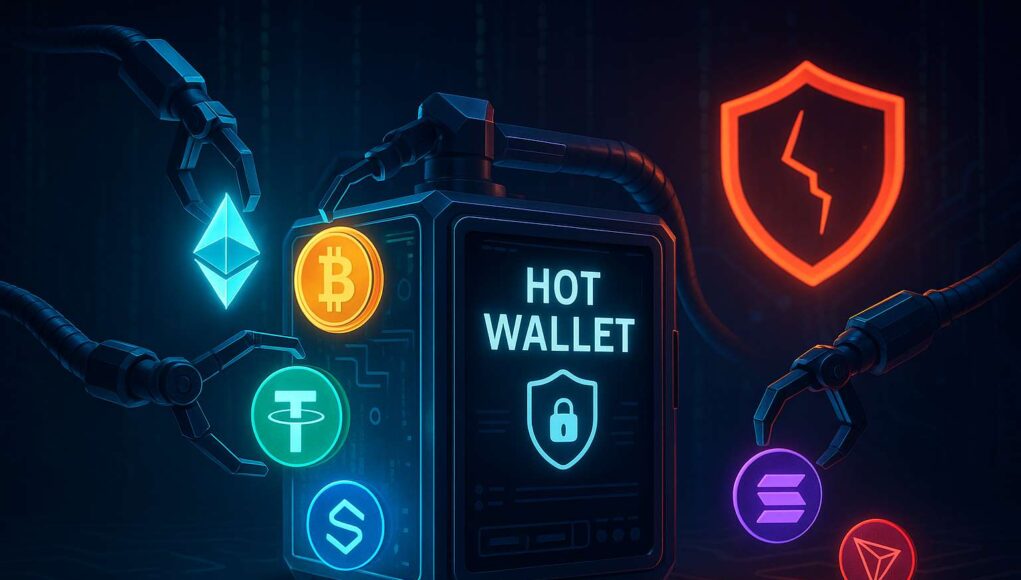The BigONE hack has sent fresh shockwaves through the cryptocurrency sector, exposing persistent vulnerabilities in the security of crypto exchanges. In a coordinated supply chain attack, hackers exploited weaknesses in the exchange’s infrastructure. In the process, they drained approximately $27 million from hot wallets holding assets like BTC, ETH, USDT, SOL, and TRX. This latest cryptocurrency exchange hack serves as yet another reminder of the evolving tactics cybercriminals employ to target digital assets.
What Happened in the BigONE Hack?
According to official statements from BigONE, the supply chain attack occurred in mid-July 2025. The hackers leveraged weaknesses within a third-party service connected to BigONE’s systems, ultimately breaching its hot wallet security. The attackers made off with a mix of major cryptocurrencies, including Bitcoin (BTC), Ethereum (ETH), Tether (USDT), Solana (SOL), and Tron (TRX).
BigONE promptly disclosed the breach and confirmed that it would fully compensate users for their losses. This swift response aims to mitigate reputational damage and maintain user trust in the wake of the crypto exchange’s security lapse.
>>> Read more: CertiK May Report: Social Engineering Drives 2025 Crypto Losses
Why Crypto Exchange Security Remains Vulnerable
The BigONE hack is not an isolated event but rather part of a broader pattern of exchange vulnerabilities in 2025. As platforms expand their integrations and adopt more complex operational frameworks, they expose themselves to new types of risks, particularly crypto supply chain exploits that leverage trusted but insecure third-party services.
Hot wallets remain a favored attack vector for security breaches due to the always-on nature of these wallets. They are more accessible to cybercriminals than cold storage solutions. This incident reinforces warnings from cybersecurity experts about the persistent dangers lurking in the crypto infrastructure’s weakest links.
How Supply Chain Attacks Exploit Hot Wallet Security
Supply chain attacks in crypto often target exchanges indirectly, breaching ancillary services to gain access to critical systems. In BigONE’s case, the attackers circumvented direct security measures by exploiting vulnerabilities within trusted integrations. That’s a growing trend among sophisticated threat actors.
Such breaches highlight systemic risks tied to blockchain security, where even robust defenses can be undermined through third-party weaknesses. Industry analysts warn that unless crypto exchanges reassess their reliance on interconnected services, more incidents like the BigONE hack are likely.
Industry Reactions to the BigONE Security Breach
The BigONE hack has drawn concern from across the crypto community, prompting renewed calls for exchanges to bolster security. Analysts emphasize the need for more rigorous security audits, enhanced monitoring of third-party integrations, and better risk management practices to combat cryptocurrency theft.
While some regulatory observers see this incident as evidence of the sector’s growing pains, others stress the importance of transparency and user protection. BigONE’s immediate pledge to compensate users has been well-received, contrasting with slower or less forthcoming responses seen in prior exchange breaches.
Crypto Market Resilience Despite the Latest Cryptocurrency Hack
Interestingly, the broader market has shown resilience following this BigONE hack. While past breaches triggered market-wide sell-offs, major assets like Bitcoin and Ethereum held steady. Analysts attribute this stability to increased market maturity and investor confidence in established assets, despite recurring crypto exchange security failures.
This tempered reaction suggests that, though still a concern, security breaches no longer provoke panic among seasoned traders and institutional participants.
>>> Read more: GMX Hack: Attacker Returns $37M in Deal After $42M Exploit
The BigONE hack underscores the ongoing challenges facing crypto exchange security, particularly as supply chain attacks become more prevalent and sophisticated. Despite user compensation promises and robust incident responses, the event reveals critical weaknesses. Exchanges must address these to safeguard user assets.
For users and investors alike, this latest cryptocurrency exchange hack serves as a stark reminder of the importance of understanding custodial risks and the necessity for continued vigilance in an industry still grappling with security maturity.
Readers’ frequently asked questions
What is a supply chain attack in the context of crypto exchanges?
A supply chain attack exploits vulnerabilities in the third-party vendors, software, or services that an exchange depends on. Instead of attacking the exchange directly, hackers compromise these integrations to gain indirect access to critical infrastructure like hot wallets. These types of attacks are increasingly common as exchanges expand their technical ecosystems.
How can users protect themselves from exchange-related hacks?
Users can reduce their risk by avoiding storing significant amounts of cryptocurrency on centralized exchanges. Instead, they should use hardware wallets or other forms of cold storage for long-term holdings. Additionally, staying informed about an exchange’s security track record and regularly reviewing its incident history can help users make safer decisions.
How long does it typically take exchanges to reimburse users after a hack?
Compensation timelines vary widely between exchanges. Some process reimbursements within weeks if funds are insured or quickly recovered, while others may take months, depending on legal, regulatory, and financial complexities. In BigONE’s case, users should monitor official updates for specific timelines.
What Is In It For You? Action items you might want to consider
Reassess the security of any exchange-based holdings
If you hold significant assets on centralized exchanges, this incident is a reminder to review your current storage strategy. Evaluate whether your exposure to hot wallets is necessary or if more secure options like hardware wallets are a better fit.
Monitor trends in supply chain exploits within crypto
Supply chain vulnerabilities are emerging as a favored vector for attacks against exchanges. Staying informed about evolving threats can help investors and professionals anticipate risks that may impact trading platforms or service providers.
Track BigONE’s updates on compensation timelines
If you are a BigONE user or indirectly affected through associated services, monitor the platform’s official channels for detailed updates on compensation and any security overhauls announced as a result of this breach.










